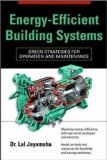Difference Between EER and SEER
When considering of the efficiency of air conditioners and heat pumps, one should consider EER, the Energy Efficiency Ratio, and SEER, the Seasonal Energy Efficient Rating.
Let us look at the difference between SEER and EER. Energy Efficiency Ratio is a measurement of the efficiency of a cooling system when the outdoor temperature is at specific levels. Seasonal Energy Efficiency Ratio is used to measure the efficiency of a cooling system over an entire season. The difference is, where EER is related to the specific outdoor temperature, SEER is related to the entire seasonal temperatures.
Another difference is, that almost all the residential cooling units are measured with SEER.
When considering their calculations, the EER and SEER are calculated differently. SEER is calculated by dividing the Annual BTU cooling by the Total Watt Hrs. On the other hand, EER is calculated by dividing the BTU capacity by the running wattage.
Another difference that can be seen, is that Energy Efficiency Ratio can be measured directly, whereas, Seasonal Energy Efficient Rating is determined only by predictions, because of unpredictable weather conditions.
Where the value of EER is normally calculated at 35 degrees Celsius and 27 degrees Celsius, the value for SEER is calculated under average air conditions. SEER is always tested at the manufacturer’s establishment, and therefore, it is always better to buy air conditioners based on SEER.
EER was the only system in the past to determine the efficiency of cooling systems. SEER was introduced later as an alternative to EER. Nowadays, people judge cooling systems by looking at the Seasonal Energy Efficient Rating.
Summary:
1. Energy Efficiency Ratio is a measurement of the efficiency of a cooling system when the outdoor temperature is at specific levels. Seasonal Energy Efficiency Ratio is used to measure the efficiency of a cooling system over an entire season.
2. Almost all the residential cooling units are measured in SEER.
3. Energy Efficiency Ratio can be measured directly, whereas, Seasonal Energy Efficient Rating is determined only by predictions, because of unpredictable weather conditions.
4. SEER was later introduced as an alternative to EER.
5. When the value of EER is normally calculated at 35 degrees Celsius and 27 degrees Celsius, the value for SEER is calculated under average air conditions.
6. SEER is always tested at the manufacturer’s establishment, and therefore, it is always better to buy air conditioners based on SEER.
- Difference Between CNBC and Fox Business - October 3, 2011
- Difference Between Distilled Water and Boiled Water - September 30, 2011
- Difference Between McDonalds and Burger King - September 30, 2011

